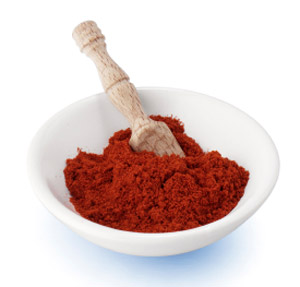The next spice we will take a closer look at in our History of Spice Series is Paprika.
Common Name: Paprika
Latin Name: Capsicum annuum
Other Names: Red Pepper, Turkish Pepper
 Description
Description
Paprika is a powdered, orange-red colored spice. Paprika does not come from one specific plant. It is made from a variety of ground and dried chile peppers. The taste, heat and flavor of the Paprika will vary depending on the peppers used. The flavor can range from sweet and mild to smoky and hot. In general, it tends to be more mild than hot. ASTA grade is a color scale for paprika. The higher the ASTA number, the brighter the color.
History
Red paprika originated in Southern Mexico, Central America, and the Antilles Islands. It was used for both seasoning of food as well as medicine for healing. According to internet lore, Christopher Columbus discovered it and introduced it to Europe.
Sometime after Christopher Columbus brought it over from the New World, paprika made its way to Hungary. It has been a staple in Hungarian food ever since and it was the Hungarians that gave it the name Paprika.
Paprika was not used in the west until sometime during the mid-1900s.
The zoo sometimes includes paprika in the food of flamingos in order to help them keep their pink color!
Today, Hungary, Spain, South America, the Mediterranean, India, and California are all major producers of paprika.
Culinary Uses
Paprika is frequently used as a garnish in deviled eggs and on quiche. You will also see it as an ingredient for many Hungarian dishes such as goulash. It is often used in hummus.
Paprika can also be used as a substitute for flour in thickening a sauce and is a natural dye for soups and stews. It is also an excellent addition in salt-free seasonings and blends.
Medicinal Uses
Native Americans from Southern Mexico first used paprika as medicine because they believed it had many healing powers.
Paprika peppers have an amazing amount of vitamin C. In fact, they have seven times as much vitamin C as oranges. Hungarian scientist, Dr. Szent-Györgyi won a Nobel Prize in 1937 for his work with paprika peppers and Vitamin C research.




